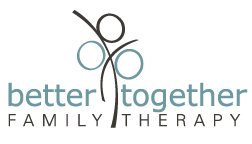Strengthening ADHD Superpowers in Adults
Our ADHD Therapists highly recommend reading ADHD 2.0
Adults with ADHD should consider reading ADHD 2.0: New Science and Essential Strategies for Thriving with Distraction. Written by two physicians who both have been diagnosed with ADHD, Dr. Hallowell and Dr. Ratey, the book approaches ADHD with a strengths-based view. And as the title implies, it’s full of ideas for building an ADHD friendly lifestyle.
A race car brain with bicycle brakes
Drs. Hallowell and Ratey state that ADHD is “like a race car brain with bicycle brakes.” It means that sometimes your ADHD brain goes super fast but doesn’t always know how to slow down.
Have you ever had the feeling that your ADHD is not letting you slow down in the way that you need it to? We all need ways to manage and strengthen those bicycle brakes. Stronger brakes can help us with impulse control. They can stop us from diving into new ideas when we need to be doing day to day tasks.
Stronger brakes = better focus for adults and kids with ADHD
Here are 3 ways to get them.
1) Exercise helps adults with ADHD (kids too) to organize thoughts and maintain focus
It sounds obvious. But exercise really matters when it comes to managing ADHD symptoms. During exercise a protein called the “brain derived neurotropic factor” is released. When this protein is released it helps build neural pathways. These pathways make us more efficient in planning and executing our plans. In other words, it becomes easier to focus and stay on task.
2) Connect with others to boost focus and reduce anxiety
Having strong friendships and relationships helps too. Academically successful teens with ADHD often have friends that they study and track assignments with. For adults, supportive partners and friends can keep us accountable for being on time and completing tasks. Others’ expectations can boost motivation, which in turn boosts focus. For more motivation boosters, click here.
Drs. Hallowell and Ratey describe the lack of connection as toxic to those with ADHD (and without). Let’s face it: having ADHD means making lots of mistakes. And that can make us feel pretty terrible. Our friends and loved ones remind us that we’re worthy even in times of distress. Knowing that we’re loved can also help build confidence and reduce anxiety. This is key, because anxiety can send that race car brain into overdrive. For more on how to decrease symptoms of anxiety click here.
3) Find what makes your brain tick
Notice that you have no patience for some things but all the time in the world for others? Your ADHD brain gives you a superpower called “hyperfocus,” an ability to get very invested in things that interest you. Hyperfocus can be harnessed to help you learn and grow. Drs. Hallowell and Ratey call this ‘finding your right kind of difficult.’ It means finding the thing that you enjoy spending hours of time doing, and building a life that depends on it.
How do you find what makes your brain tick? ADHD 2.0 has some great surveys and resources provided by the authors. In short, the thing that makes your brain tick is probably
A) Something that you consistently spend a lot of time thinking about.
You’ve noticed how something doesn’t work, or how you might make it better. You keep coming back to this topic and this problem among all the things you think about.
B) Something that you feel happy to work on regardless of the rewards or accolades.
It doesn’t matter whether you’re getting paid in gum. You still want to be part of the conversation. Your brain hones in and feels delighted whenever this topic pops up.
C) Something that you tend to have a fresh take on.
You often have a fresh perspective or something new to add to the conversation around this topic in a way most don’t think about.

